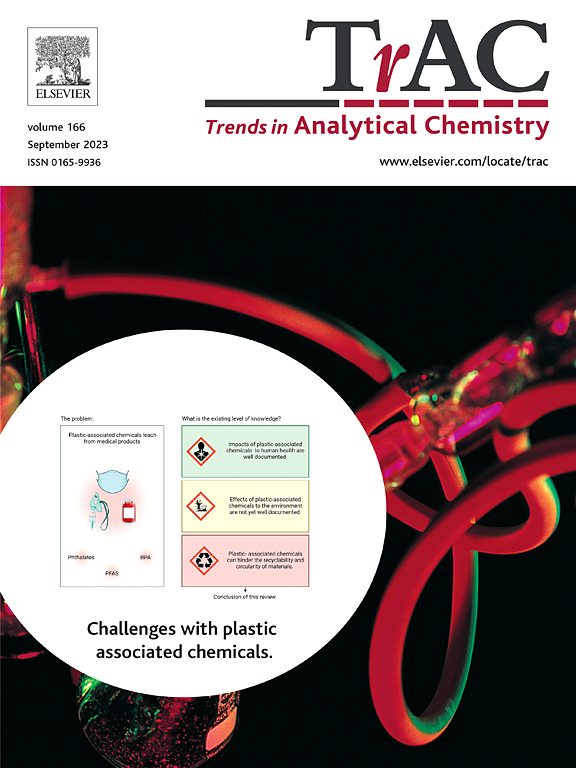Micropumps and microvalves for biomedical applications
IF 11.8
1区 化学
Q1 CHEMISTRY, ANALYTICAL
引用次数: 0
Abstract
This review focuses on the recent microfluidic technologies for fine manipulation of trace liquids based on functional components constructed by micropumps and microvalves and its biomedical applications. The working principle and importance of micropumps and microvalves as key components are expounded, and functional components such as enrichment, separation, mixing, extraction, purification and screening based on them are introduced. The wide applications of these functional components in wearable devices and point-of-care (POCT) devices were discussed, including real-time monitoring of human physiological indicators, rapid diagnosis of infectious diseases, early screening of cancer, etc. The significant advantages of microfluidic chips containing micropumps and microvalves in improving detection sensitivity, accuracy and efficiency are analyzed, and their important roles in personalized medicine and precision medicine are emphasized. The technical bottlenecks, limitations and possible solutions of existing microfluidic chips are discussed, and future development trends and potential breakthroughs in the biomedical field are discussed.

生物医学应用的微泵和微阀
本文综述了近年来基于微泵和微阀等功能元件的微量液体精细处理微流控技术及其在生物医学上的应用。阐述了微泵和微阀作为关键部件的工作原理和重要性,并介绍了基于它们的富集、分离、混合、萃取、纯化、筛选等功能部件。讨论了这些功能组件在可穿戴设备和POCT (point-of-care)设备中的广泛应用,包括人体生理指标的实时监测、传染病的快速诊断、癌症的早期筛查等。分析了含有微泵和微阀的微流控芯片在提高检测灵敏度、准确性和效率方面的显著优势,强调了其在个性化医疗和精准医疗中的重要作用。讨论了现有微流控芯片的技术瓶颈、局限性和可能的解决方案,并讨论了未来微流控芯片在生物医学领域的发展趋势和潜在突破。
本文章由计算机程序翻译,如有差异,请以英文原文为准。
求助全文
约1分钟内获得全文
求助全文
来源期刊

Trends in Analytical Chemistry
化学-分析化学
CiteScore
20.00
自引率
4.60%
发文量
257
审稿时长
3.4 months
期刊介绍:
TrAC publishes succinct and critical overviews of recent advancements in analytical chemistry, designed to assist analytical chemists and other users of analytical techniques. These reviews offer excellent, up-to-date, and timely coverage of various topics within analytical chemistry. Encompassing areas such as analytical instrumentation, biomedical analysis, biomolecular analysis, biosensors, chemical analysis, chemometrics, clinical chemistry, drug discovery, environmental analysis and monitoring, food analysis, forensic science, laboratory automation, materials science, metabolomics, pesticide-residue analysis, pharmaceutical analysis, proteomics, surface science, and water analysis and monitoring, these critical reviews provide comprehensive insights for practitioners in the field.
 求助内容:
求助内容: 应助结果提醒方式:
应助结果提醒方式:


